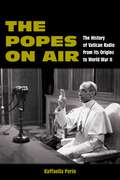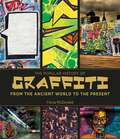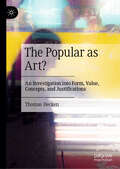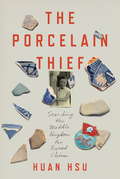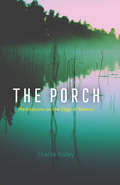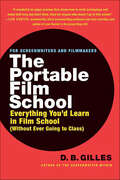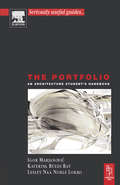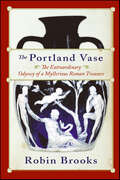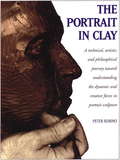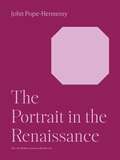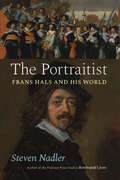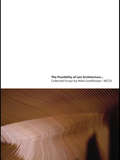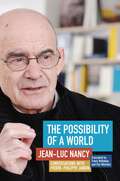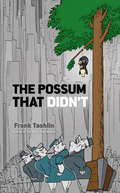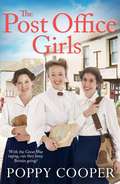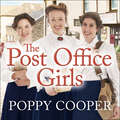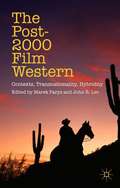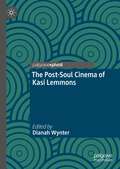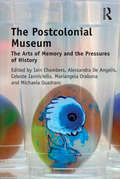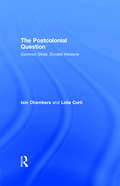- Table View
- List View
The Pop Musical: Sweat, Tears, and Tarnished Utopias (Short Cuts)
by Professor Alberto MiraAfter Hollywood and Tin Pan Alley’s iron grip on the movie musical began to slip in the face of pop’s cultural dominance, many believed that the musical genre entered a terminal decline and finally wore itself out by the 1980s. Though the industrial model of the musical was disrupted by the emergence of pop, the Hollywood musical has not gone extinct. Many Hollywood productions from the 1960s to the present have revisited the forms and conventions of the classic musical—except instead of drawing from showtunes and jazz standards, they employ the styles and iconography of pop.Alberto Mira offers a new account of how pop music revolutionized the Hollywood musical. He shows that while the Hollywood system ceased producing large-scale traditional musicals, different pop strains—disco, rock ’n’ roll, doo-wop, glam, and hip-hop—renewed the genre, giving it a new life. While the classical musical presented a world light on conflict, defined by theatricality and where effortless talent can shine through, the introduction of pop spurred musicals to address contemporary social and political conditions. Mira traces the emergence of a new set of themes—such as the painful hard work depicted in Dirty Dancing (1987); the double-edged fandom of Velvet Goldmine (1998); and the racial politics of Dreamgirls (2006)—to explore why the Hollywood musical has found renewed relevance.
The Popes on Air: The History of Vatican Radio from Its Origins to World War II (World War II: The Global, Human, and Ethical Dimension)
by Raffaella PerinThe story of the origin of Vatican Radio provides a unique look at the history of World War IIThe book offers the first wide-ranging study on the history of Vatican Radio from its origins (1931) to the end of Pius XII’s pontificate (1958) based on unpublished sources. The opening of the Secret Vatican Archives on the records regarding Pius XII will shed light on the most controversial pontificate of the 20th century. Moreover, the recent rearrangement of the Vatican media provided the creation of a multimedia archive that is still in Fieri.This research is an original point of view on the most relevant questions concerning these decades: the relation of the Catholic Church with the Fascist regimes and Western democracies; the attitude toward anti-Semitism and the Shoah in Europe, and in general toward the total war; the relationship of the Holy See with the new media in the mass society; the questions arisen in the after-war period such as the Christian Democratic Party in Italy; the new role of women; and anti-communism and the competition for the consensus in the social and moral order in a secularized society.
The Popular History of Graffiti: From the Ancient World to the Present
by Fiona McDonaldWhat is graffiti? And why have we, as a culture, had the urge to do it since 30,000 BCE? Artist Fiona McDonald explores the ways in which graffiti works to forever compel and simultaneously repel us as a society. When did graffiti turn into graffiti art, and why do we now pay thousands of dollars for a Banksy print when just twenty years ago, seminal graffiti artists from the Bronx were thrown into jail for having the same idea? Graffiti has not always been imbued with a sense of aesthetic, but when and why did we suddenly “decide” that it is worthy of consideration and criticism, just within the past few years?Throughout history, graffiti has served as an innately individualistic expression (such as Viking graffiti on the walls of eighth-century churches), but it has also evolved into a visual and narrative expression of a collective group. Graffiti brings to mind not only hip-hop culture and urban landscapes, but petroglyphs, tree trunks strewn with carved hearts symbolizing love, and million-dollar works of art. Learn about more graffiti artists and rebels such as: the band Black Flag, Lee Quinones and Fab 5 Freddy, Dandi, Zephyr, Blek le Rat, Nunca, Keith Haring, and more! Illustrated with stunning full-color photos of graffiti throughout time, The Popular History of Graffiti promises to be an important and dynamic addition to graffiti literature.
The Popular as Art?: An Investigation into Form, Value, Concepts, and Justifications
by Thomas HeckenThis book will reconstruct and analyze the logic and frameworks surrounding positive evaluations of popular art in articles and books predominantly published in the United States and western Europe. It will also examine negative evaluations of the popular, especially those that have successfully prevented the popular from being perceived as (good) art and still provide partially effective counterarguments today. This book will examine both relevant judgments on individual works and groups of works as well as general judgments and assessments.
The Porcelain Thief
by Huan HsuA journalist travels throughout mainland China and Taiwan in search of his family's hidden treasure and comes to understand his ancestry as he never has before. In 1938, when the Japanese arrived in Huan Hsu's great-great-grandfather Liu's Yangtze River hometown of Xingang, Liu was forced to bury his valuables, including a vast collection of prized antique porcelain, and undertake a decades-long trek that would splinter the family over thousands of miles. Many years and upheavals later, Hsu, raised in Salt Lake City and armed only with curiosity, moves to China to work in his uncle's semiconductor chip business. Once there, a conversation with his grandmother, his last living link to dynastic China, ignites a desire to learn more about not only his lost ancestral heirlooms but also porcelain itself. Mastering the language enough to venture into the countryside, Hsu sets out to separate the layers of fact and fiction that have obscured both China and his heritage and finally complete his family's long march back home.Melding memoir, travelogue, and social and political history, The Porcelain Thief offers an intimate and unforgettable way to understand the complicated events that have defined China over the past two hundred years and provides a revealing, lively perspective on contemporary Chinese society from the point of view of a Chinese American coming to terms with his hyphenated identity.From the Hardcover edition.se history in the 19th and 20th century.From the Hardcover edition.
The Porch: Meditations on the Edge of Nature
by Charlie HaileyCome with us for a moment out onto the porch. Just like that, we’ve entered another world without leaving home. In this liminal space, an endless array of absorbing philosophical questions arises: What does it mean to be in a place? How does one place teach us about the world and ourselves? What do we—and the things we’ve built—mean in this world? In a time when reflections on the nature of society and individual endurance are so paramount, Charlie Hailey’s latest book is both a mental tonic and a welcome provocation. Solidly grounded in ideas, ecology, and architecture, The Porch takes us on a journey along the edges of nature where the outside comes in, hosts meet guests, and imagination runs wild. Hailey writes from a modest porch on the Homosassa River in Florida. He sleeps there, studies the tides, listens for osprey and manatee, welcomes shipwrecked visitors, watches shadows on its screens, reckons with climate change, and reflects on his own acclimation to his environment. The profound connections he unearths anchor an armchair exploration of past porches and those of the future, moving from ancient Greece to contemporary Sweden, from the White House roof to the Anthropocene home. In his ruminations, he links up with other porch dwellers including environmentalist Rachel Carson, poet Wendell Berry, writers Eudora Welty and Zora Neale Hurston, philosopher John Dewey, architect Louis Kahn, and photographer Paul Strand. As close as architecture can bring us to nature, the porch is where we can learn to contemplate anew our evolving place in a changing world—a space we need now more than ever. Timeless and timely, Hailey’s book is a dreamy yet deeply passionate meditation on the joy and gravity of sitting on the porch.
The Portable Film School: Everything You'd Learn in Film School (Without Ever Going to Class)
by D. B. GillesThe Portable Film School is a private tutorial from an instructor at one of the nation's most prestigious film schools. D.B. Gilles explains the fundamental skills and techniques of screenwriting and making a short film arming you with the two calling cards you'll need to break into Hollywood – without having spent the tuition or a minute in a classroom.
The Portable Radio in American Life
by Michael Brian SchifferHistory of the development of the portable radio over the years.
The Portfolio: An Acrchitecture Student's Handbook (Architectural Students Handbooks Ser.)
by Lesley Lokko Katerina Ruedi Ray Igor MarjanovicThe portfolio is the single most important part of every architectural student's education. This book proides a complete guide to preparing, compiling and presenting this crucial element of the architecture course.The experienced author team gives practical advice for the creation of the portfolio covering issues of size, storage, layout and order. They go on to guide the student through the various forms a portfolio can take: the Electronic Portfolio, the Academic Portfolio and the Professional Portfolio suggesting different approaches and different media to use in order to create the strongest portfolio possible. The team also presents the best examples from international student portfolios to show the reader their recommendations in practice. The book has a companion website where full colour representations of the best examples of portfolio work can be accessed.Also in the Seriously Useful Guides series:* The Dissertation* The Crit* Practical Experience
The Portland Vase: The Extraordinary Odyssey of a Mysterious Roman Treasure
by Robin BrooksFor thousands of years an enigmatic and astonishingly beautiful piece of Roman art has captivated those who have come in contact with it.Made before the birth of Christ, the Portland Vase, as it is called, is renowned for both its beauty and its mystery.In The Portland Vase, Robin Brooks takes us on a vivid journey across Europe and through the centuries, as this delicate piece of glass, less than ten inches in height, passes through the hands of a stunning cast of characters, including the first Roman emperor, Augustus; a notorious tomb raider; a reckless cardinal; a princess with a nasty gambling habit; the ceramics genius Josiah Wedgwood; the secretive Duchess of Portland; and a host of politicians, dilettantes, and scam artists.Rich with passion, inspiration, jealousy, and endless speculation, the story of The Portland Vase spans more than two thousand years and remains one of the art world's greatest enigmas.
The Portrait
by Glenn Rand Tim MeyerGlenn Rand, longtime photographic educator and Program Director for Graduate Programs at Brooks Institute, and Tim Meyer, Portrait Division Chair at Brooks Institute, have collaborated to create a thorough and balanced textbook on the modern techniques and practice of portrait photography. They have avoided the single-style viewpoint common to so many books on portraiture and have crafted a definitive resource for professionals, as well as students and avid amateurs, wishing to advance their skills in this discipline. Topics include: Quality of light and the portrait Ambient, continuous, and strobe light sources Understanding light modifiers and enhancers Mastering lighting ratios Importance and selection of backgrounds Extensive coverage of lighting setups Understanding light meters and metering in portraiture Lighting patterns on the human face Facial analysis Composition in portraiture Eliciting the appropriate expression The fine art portrait Portraiture for the masses
The Portrait in Clay
by Peter RubinoSimulating a workshop studio course, this book provides action-photography sequences that enable readers to observe every step a master sculptor takes in building a portrait in clay.
The Portrait in the Renaissance (The A. W. Mellon Lectures in the Fine Arts #12)
by John Wyndham Pope-HennessyA major account of Renaissance portraiture by one of the twentieth century’s most eminent art historiansIn this book, John Pope-Hennessy provides an unprecedented look at two centuries of experiment in portraiture during the Renaissance. Pope-Hennessy shows how the Renaissance cult of individuality brought with it a demand that the features of the individual be perpetuated, a concept first manifested in the portraits that fill the great Florentine fresco cycles and led, later in the fifteenth century, to the creation of the independent portrait by such artists as Sandro Botticelli, Antonio del Pollaiuolo, Giovanni Bellini, and Antonello da Messina. Pope-Hennessy goes on to describe the process by which Titian and the great artists of the High Renaissance transformed the portrait from a record of appearance into an analysis of character.
The Portraitist: Frans Hals and His World
by Steven NadlerA biography of the great portraitist Frans Hals that takes the reader into the turbulent world of the Dutch Golden Age. Frans Hals was one of the greatest portrait painters in history, and his style transformed ideas and expectations about what portraiture can do and what a painting should look like. Hals was a member of the great trifecta of Dutch Baroque painters alongside Rembrandt and Vermeer, and he was the portraitist of choice for entrepreneurs, merchants, professionals, theologians, intellectuals, militiamen, and even his fellow artists in the Dutch Golden Age. His works, with their visible brush strokes and bold execution, lacked the fine detail and smooth finish common among his peers, and some dismissed his works as sloppy and unfinished. But for others, they were fresh and exciting, filled with a sense of the sitter’s animated presence captured with energy and immediacy. Steven Nadler gives us the first full-length biography of Hals in many years and offers a view into seventeenth-century Haarlem and this culturally rich era of the Dutch Republic. He tells the story not only of Hals’s life, but also of the artistic, social, political, and religious worlds in which he lived and worked.
The Portraitist: Frans Hals and His World
by Steven NadlerA biography of the great portraitist Frans Hals that takes the reader into the turbulent world of the Dutch Golden Age. Frans Hals was one of the greatest portrait painters in history, and his style transformed ideas and expectations about what portraiture can do and what a painting should look like. Hals was a member of the great trifecta of Dutch Baroque painters alongside Rembrandt and Vermeer, and he was the portraitist of choice for entrepreneurs, merchants, professionals, theologians, intellectuals, militiamen, and even his fellow artists in the Dutch Golden Age. His works, with their visible brush strokes and bold execution, lacked the fine detail and smooth finish common among his peers, and some dismissed his works as sloppy and unfinished. But for others, they were fresh and exciting, filled with a sense of the sitter’s animated presence captured with energy and immediacy. Steven Nadler gives us the first full-length biography of Hals in many years and offers a view into seventeenth-century Haarlem and this culturally rich era of the Dutch Republic. He tells the story not only of Hals’s life, but also of the artistic, social, political, and religious worlds in which he lived and worked.
The Possibility of (an) Architecture: Collected Essays by Mark Goulthorpe, dECOi Architects
by Mark GoulthorpeArticulating a radical agenda for the rethinking of the basic precepts of the construction industry in light of digital technologies, this book explores the profound shift that is underway in all aspects of architectural process. Essays and lectures from the last fifteen years discuss these changes in relation to dECOi Architects, created in 1991 as a forward-looking architectural practice. This excellent collection is relevant to architectural professionals, academics and students and also to practitioners in many related creative fields who are similarly engaged in trying to comprehend the significance of the import of digital media.
The Possibility of a World: Conversations with Pierre-Philippe Jandin
by Jean-Luc Nancy Pierre-Philippe JandinIn this series of interviews, Jean-Luc Nancy reviews his life’s work. But like Schlegel’s historian—“a prophet facing backwards”—Nancy takes this opportunity to rummage through the history of art, philosophy, religion, and politics in search of new possibilities that remain to be thought.This journey through Nancy’s thought is interspersed with accounts of places and events and deeply personal details. The result is at once unpretentious and encyclopedic: Concepts are described with remarkable nuance and specificity, but in a language that comes close to that of everyday life.As Nancy surveys his work, he thinks anew about democracy, community, jouissance, love, Christianity, and the arts. In the end, this is a book about the possibility of a world—a world that must be greeted because it is, as Nancy says, already here.
The Possible South: Documentary Film and the Limitations of Biraciality
by R. Bruce BrasellUsing cultural theory, author R. Bruce Brasell investigates issues surrounding the discursive presentation of the American South as biracial and explores its manifestation in documentary films, including such works as Tell about the South, bro•ken/ground, and Family Name. After considering the emergence of the region’s biraciality through a consideration of the concepts of racial citizenry and racial performativity, Brasell examines two problems associated with this framework. First, the framework assumes racial purity, and, second, it assumes that two races exist. In other words, biraciality enacts two denials, first, the existence of miscegenation in the region and, second, the existence of other races and ethnicities.Brasell considers bodily miscegenation, discussing the racial closet and the southeastern expatriate road film. Then he examines cultural miscegenation through the lens of racial poaching and 1970s southeastern documentaries that use redemptive ethnography. In the subsequent chapters, using specific documentary films, he considers the racial in-betweenness of Spanish-speaking ethnicities (Mosquitoes and High Water, Living in America, Nuestra Communidad), probes issues related to the process of racial negotiation experienced by Asian Americans as they seek a racial position beyond the black and white binary (Mississippi Triangle), and engages the problem of racial legitimacy confronted by federally nonrecognized Native groups as they attempt the same feat (Real Indian).
The Possum That Didn't
by Frank TashlinThere once was a happy little possum, the happiest animal in the entire forest, who always wore a great big smile. This jolly creature was content simply to hang by his tail from a tree until he was discovered by a group of picnickers. Mistaking the possum's upside-down smile for a frown, the people resolve to rescue him ― and they turn the little possum's world topsy-turvy. Strikingly illustrated in black-and-white, this memorable satire of cultural intolerance was created by Frank Tashlin, the famed animator, film director, and author of The Bear That Wasn't. Readers of all ages will appreciate the book's message as well as its distinctive drawings.
The Post Office Girls: Book One in a heartwarming and uplifting new wartime saga series
by Poppy CooperWith the Great War raging, can they keep Britain going? 1915. On Beth Healey's eighteenth birthday, she hopes that she will be able to forget the ghastly war and celebrate. But that evening, her twin brother Ned announces that he has signed up to fight. No longer able to stand working in her parents' village shop while others are doing their bit, Beth applies to join the Army Post Office's new Home Depot on the Regent's Park, and is astounded to be accepted. She will be responsible for making sure that letters and parcels get through to the troops on the front line. Beth is thrilled to be a crucial part of the war effort and soon makes friends with fellow post girls Milly and Nora, and meets the handsome James. But just as she begins to feel that her life has finally begun, everything starts falling apart, with devastating consequences for Beth and perhaps even the outcome of the war itself. Can Beth and her new friends keep it all together and find happiness at last?
The Post Office Girls: Book One in a heartwarming and uplifting new wartime saga series
by Poppy CooperWith the Great War raging, can they keep Britain going?1915. On Beth Healey's eighteenth birthday, she hopes that she will be able to forget the ghastly war and celebrate. But that evening, her twin brother Ned announces that he has signed up to fight. No longer able to stand working in her parents' village shop while others are doing their bit, Beth applies to join the Army Post Office's new Home Depot on the Regent's Park, and is astounded to be accepted. She will be responsible for making sure that letters and parcels get through to the troops on the front line. Beth is thrilled to be a crucial part of the war effort and soon makes friends with fellow post girls Milly and Nora, and meets the handsome James. But just as she begins to feel that her life has finally begun, everything starts falling apart, with devastating consequences for Beth and perhaps even the outcome of the war itself. Can Beth and her new friends keep it all together and find happiness at last?The Post Office Girls is perfect for fans of Johanna Bell, Daisy Styles and Nancy Revell.
The Post-2000 Film Western
by Marek Paryz John R. LeoThis collection of thirteen essays by scholars from the US, UK, Netherlands, Germany, Poland, Australia and Hong Kong, explores the trajectories of the post-2000 film Western in American, transnational, inter-generic, and inter-medial contexts. With examples ranging from major American films, through acclaimed international productions, to works such as experimental films and television commercials, the contributors seek to account for the appeal and currency of the film Western today. Theyare concerned with the issues of historical revisionism and contemporary ideologies, of audience and industry, of the cross-pollination of film genres, and highlight a plethora of problems that contemporary Westerns have addressed. They make a case for the Western's capacity for renewal – through the reworking of staple themes, incorporation of other film genres, varied political implications, and foreign appropriations.
The Post-Soul Cinema of Kasi Lemmons
by Dianah WynterIn this edited volume, Kasi Lemmons, the first African-American woman auteur to solidly and steadily produce a full body of work in cinema—an oeuvre of quality, of note, of international recognition—will get the full film-studies treatment. This collection offers the first scholarly examination of Lemmons’ films through various frameworks of film theory, illuminating her highly personal, unique, and rare vision. In Lemmons’ worldview, the spiritual and the supernatural manifest in the natural, corporeal world. She subtly infuses her work with such images and narratives, owning her formalism, her modernist aesthetic, her cinematic preoccupations and her ontological leanings on race. Lemmons holds the varied experiences of African-American life before her lens—the ambitious bourgeoise, the spiritually lost, the ill and discarded, and the historically erased—and commits to capturing the nuances and differentiations, rather than perpetuating essentialized portrayals. This collection delves into Lemmons’ iconoclastic drive and post-soul aesthetic as emanations of her attitudes toward personal agency, social agency, and social justice.
The Postcolonial Museum: The Arts of Memory and the Pressures of History
by Iain Chambers Celeste Ianniciello Alessandra De Angelis Mariangela OrabonaThis book examines how we can conceive of a ’postcolonial museum’ in the contemporary epoch of mass migrations, the internet and digital technologies. The authors consider the museum space, practices and institutions in the light of repressed histories, sounds, voices, images, memories, bodies, expression and cultures. Focusing on the transformation of museums as cultural spaces, rather than physical places, is to propose a living archive formed through creation, participation, production and innovation. The aim is to propose a critical assessment of the museum in the light of those transcultural and global migratory movements that challenge the historical and traditional frames of Occidental thought. This involves a search for new strategies and critical approaches in the fields of museum and heritage studies which will renew and extend understandings of European citizenship and result in an inevitable re-evaluation of the concept of ’modernity’ in a so-called globalised and multicultural world.
The Postcolonial Question: Common Skies, Divided Horizons
by Iain Chambers Lidia CurtiBrings together renowed and emerging critical voices to respond to the questions raised by the concept of the 'post-colonial'. The contributors explore the diverse cultures which are shaping our global future.

